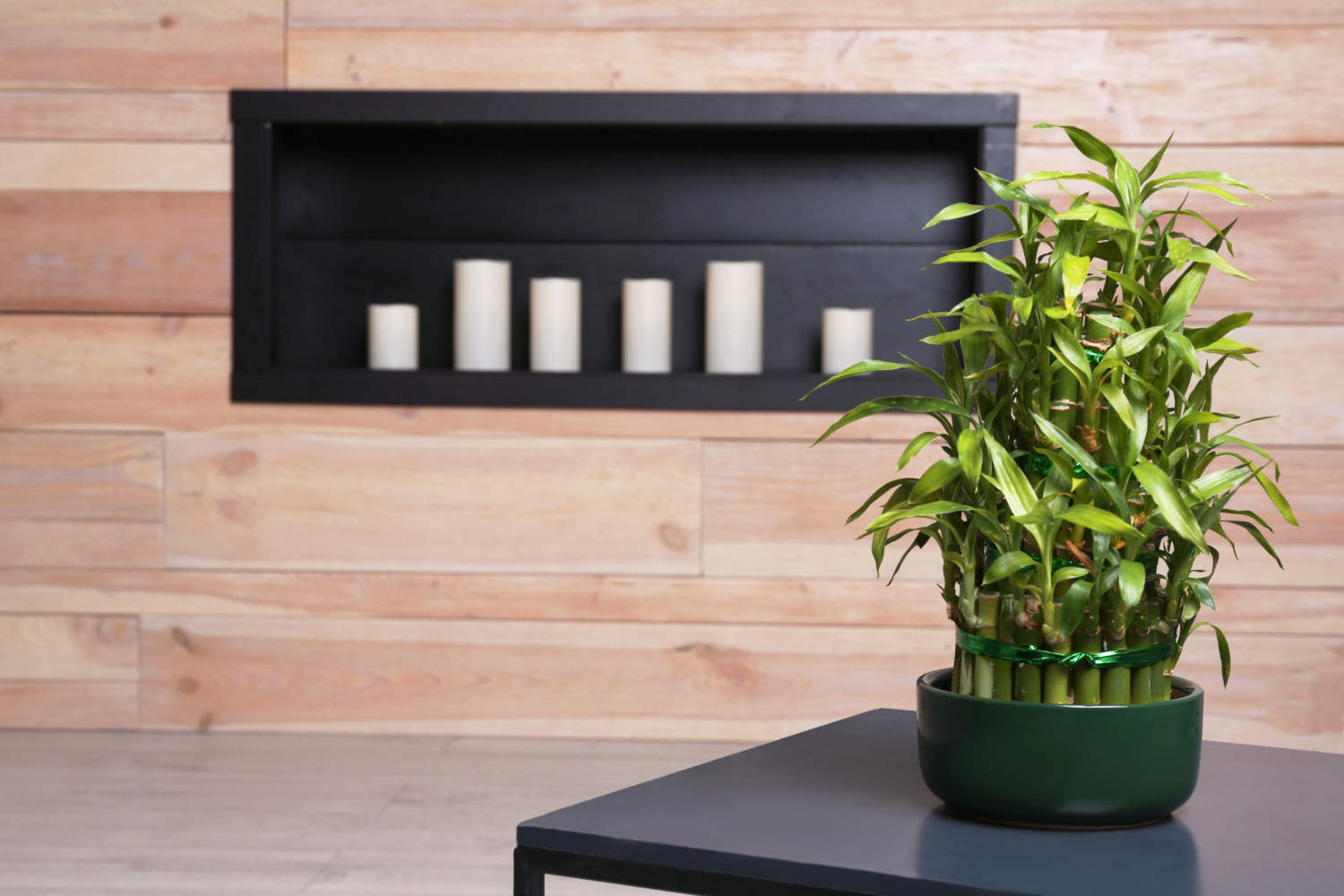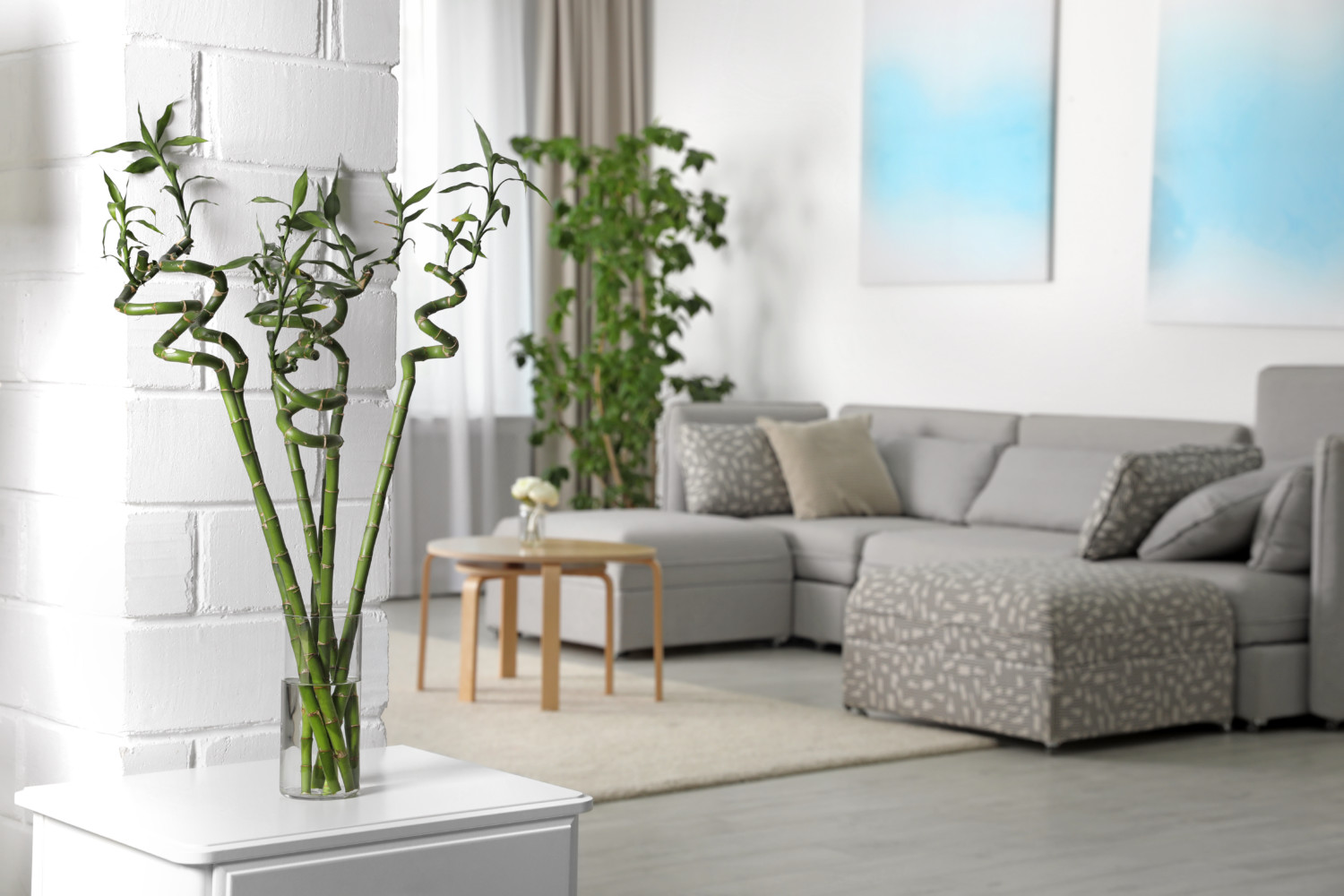Lucky bamboo is a tried-and-true houseplant that is popular in both homes and offices thanks to its ease of care, sculptural look and ability to thrive in low light. Knowing a little bit more about caring for lucky bamboo will let you help it thrive, though.
You might be surprised to hear that lucky bamboo is not actual bamboo! Rather, it’s a member of the tropical water lily family that, because of its thick, banded stems and narrow leaves, simply resembles the look of bamboo.
Dracaena sanderiana is considered lucky because of its affiliation with feng shui, the Chinese practice of balancing yin and yang. In Chinese lore, lucky bamboo symbolizes good fortune, and when strategically placed in certain areas, it’s said to attract positive energy.

How To Grow Lucky Bamboo
Though this houseplant is popular due to its ability to survive in low light, it will grow taller and faster in bright, indirect light. But be careful, because direct light will burn the leaves.
Lucky bamboo can grow in water or well-drained potting soil. For soil, it’s best when kept moist but not soaked. Just one drop of liquid fertilizer once a month is enough to watch soil-grown plants flourish.
For a water-grown plant, stabilize the stalks in a small number of pebbles to keep it upright and fill the pot or vase with fresh water. The water level should be an ample amount to fully submerge the roots but not the stalks. If using tap water, let the watering jug sit out overnight to let the chlorine evaporate as this plant is sensitive to chemicals and salts. Plants in water only need to be fed every other month.

Avoid placing the plant near a draft, air conditioner or heating vent. The best temperature range falls between 65-90 degrees Fahrenheit.
Sculptural lucky bamboo can be trained to grow into shapes or braided stalks. It takes time — and usually, three sides of a cardboard box and a bit of plant wire — to encourage the plant to grow toward a single light source into the desired shape.
When pruning, use sterile scissors and only trim the offshoots within an inch or two of the main stem. This encourages new shoots to grow, creating a fuller plant. You can use what you’ve trimmed to propagate new lucky bamboo in distilled water. Don’t be alarmed if you see red roots spring from those cuttings, as this simply means your propagated plant is healthy!
Lucky bamboo makes a great gift, but be sure to keep this plant away from pets as it’s toxic to cats and dogs.
This story originally appeared on Simplemost. Check out Simplemost for additional stories.


